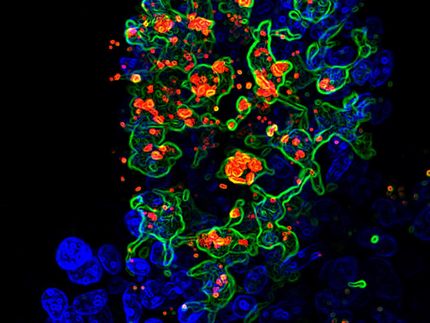Immune system molecule weaves cobweb-like nanonets to snag Salmonella, other intestinal microbes
Advertisement
A team of researchers led by UC Davis Health System has found that human alpha-defensin 6 (HD6) – a key component of the body's innate defense system – binds to microbial surfaces and forms "nanonets" that surround, entangle and disable microbes, preventing bacteria from attaching to or invading intestinal cells.
The research describes an entirely new mechanism of action for defensins, an important group of molecules known to bolster the defenses of circulating white blood cells, protect cellular borders from invasive pathogens and regulate which "friendly" microbes can colonize body surfaces. The discovery provides important clues to inflammatory bowel diseases, especially Crohn's disease, which may be caused, in part, by deficiencies in HD6 levels or function. A paper describing the work appears in Science.
"During the past 25 years, researchers have learned a lot about the biological function of defensins, but the role of HD6, a particular molecule that is highly expressed in the intestines, was a mystery," said Charles L. Bevins, professor of microbiology and immunology at UC Davis. "We now know that HD6 has a very unique role in the body's innate immune system. Its ability to latch onto microbial surfaces and self-assemble to cast a fibrous net around bacteria, including pathogens like Salmonella and Yersinia, as well as fungi and protozoan parasites, gives the intestine, a critical part of the body, a powerful and broad spectrum of defense against potential threats."
Bevins is co-senior author of the paper along with his UC Davis colleague Professor Andreas Bäumler, an expert in bacterial pathogenesis; UCLA Emeritus Professor Robert I. Lehrer, whose laboratory was the first to discover defensins in the early 1980s; and Professor Wuyuan Lu, a synthetic protein chemist from the University of Maryland School of Medicine whose work provided clues to HD6's subtle and unique properties. First author Hiutung Chu, a graduate student in the Bevins lab who is now a fellow at the California Institute of Technology, was a driving force on the nine-year quest to solve the HD6 puzzle.


















































